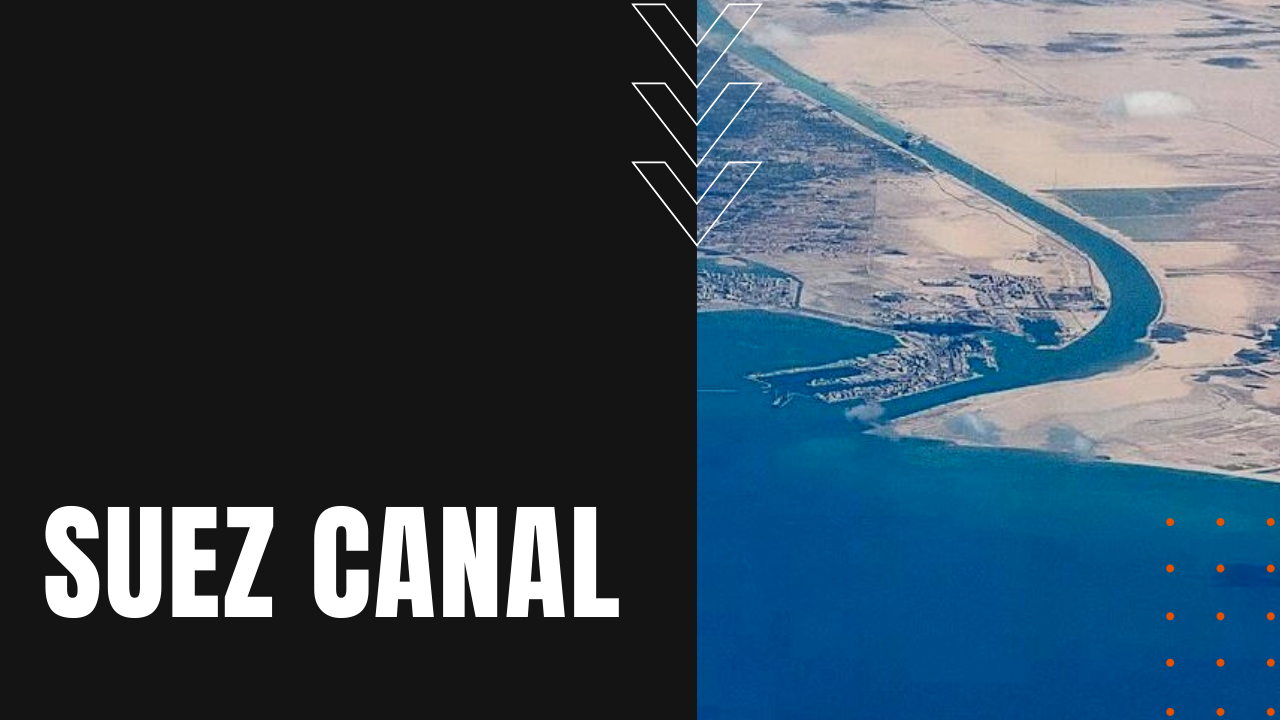Suez Canal: Maritime’s Shortcut Through Egypt

As it currently exists, the Suez Canal is a 120 mile artificial waterway connecting the Mediterranean Sea at Port Sa’id to the Red Sea at Port Tewfik at the city of Suez, which in effect defines the border between Africa and Asia. The waterway connects the Atlantic and Indian Oceans in a way that doesn’t require a ship heading between Europe and Asia to either sail around Africa, or to wait for the ice to melt in the Arctic.
Unlike the Panama Canal, which comprises the world’s other maritime shortcut, the Suez Canal lacks the presence of locks, since its entire transit happens at sea level. By way of example regarding the canal’s geographic shortcut to maritime shipping, for a vessel traveling from Port Sudan to Anatolia, Turkey, the trip through the canal would be approximately 1,243 miles, while the route around Africa would be greater than 14,000 miles.
When was the Suez Canal Built?
First opened in 1869, the big dig would take ten years by the Suez Canal Company, spearheaded by French entrepreneur Ferdinand de Lesseps. In 1858, a deal was struck between Lesseps and Mohammad Sa’id Pasha, the son of the Egyptian ruler, Isma’il Pasha, giving the Suez Canal Company a 99-year lease for a canal zone through the Great Bitter Lakes region of Egypt. 75% of the profits would go to the Canal Company, 15% to Egypt and 10% to investors.
Throughout its decade-long construction, over 1.5 million workers were involved in the canal dig, with an approximate 120,000 lives lost to accidents, harsh living conditions, cholera, malaria and yellow fever. After the two opposing construction teams met in the middle at the Bitter Lakes, an enormous opening ceremony was held on the canal on November 15th, 1869, with banquets held on Isma’il Pasha’s yacht and blessings performed in both Christian and Islamic ceremonies, including a hastily-constructed church and mosque built specifically for the event.
Who Owns the Suez Canal?
While the canal has seen bitter conflicts of ownership during the world wars of the 20th century, the United Kingdom and France owned the canal until July of 1956, when the reigning president of Egypt, Gamal Abdel Nasser, nationalized the canal for the Egyptian people, which kicked off the Suez Crisis of late 1956, when British and French forces attempted to regain ownership. Now maintained by the Suez Canal Authority of Egypt, in 2019, the Suez Canal saw 17,800 ships traverse the Egyptian shortcut, at a cost of $465,000 per transit.
